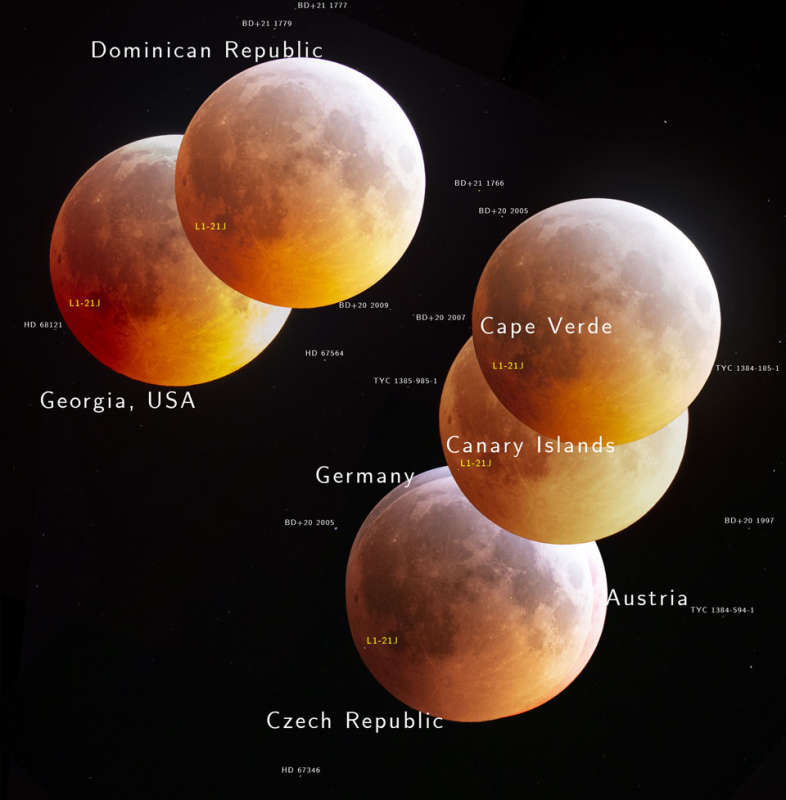Credit & Copyright: F. Pichardo,
G. Hogan,
P. Horclek,
F. Hemmerich,
S. Schraebler,
L. Haepl,
R. Eder;
Processing & Copyright : Matipon Tangmatitham; Text: Matipon Tangmatitham (NARIT)
Explanation:
Do we all see the same Moon?
Yes, but we all see it differently.
One difference is the apparent location of the Moon against background
stars -- an effect known as parallax.
We humans use the parallax between our eyes to judge depth.
To see lunar parallax, though,
we need eyes placed at a much greater separations -- hundreds to thousands of kilometers
apart.
Another difference is that observers around the Earth all see a slightly different
face of our spherical Moon -- an effect known as libration.
The featured image is a composite of many views across the Earth,
as submitted to
APOD, of the
total
lunar eclipse of 2019 January 21.
These images are projected against the same background stars to illustrate both effects.
The accurate superposition of these images was made possible by a serendipitous meteorite impact on the Moon during the lunar eclipse, labeled
here L1-21J
-- guaranteeing that these submitted images were all taken within a split
second.
Processing & Copyright : Matipon Tangmatitham; Text: Matipon Tangmatitham (NARIT)
1999 2000 2001 2002 2003 2004 2005 2006 2007 2008 2009 2010 2011 2012 2013 2014 2015 2016 2017 2018 2019 2020 2021 2022 2023 2024 2025 |
Yanvar' Fevral' Mart Aprel' Mai Iyun' Iyul' Avgust Sentyabr' Oktyabr' Noyabr' Dekabr' |
NASA Web Site Statements, Warnings, and Disclaimers
NASA Official: Jay Norris. Specific rights apply.
A service of: LHEA at NASA / GSFC
& Michigan Tech. U.
|
Publikacii s klyuchevymi slovami:
lunar eclipse - lunnoe zatmenie
Publikacii so slovami: lunar eclipse - lunnoe zatmenie | |
Sm. takzhe:
Vse publikacii na tu zhe temu >> | |
